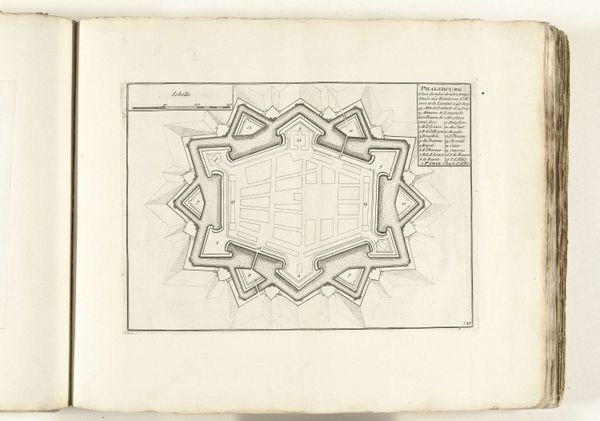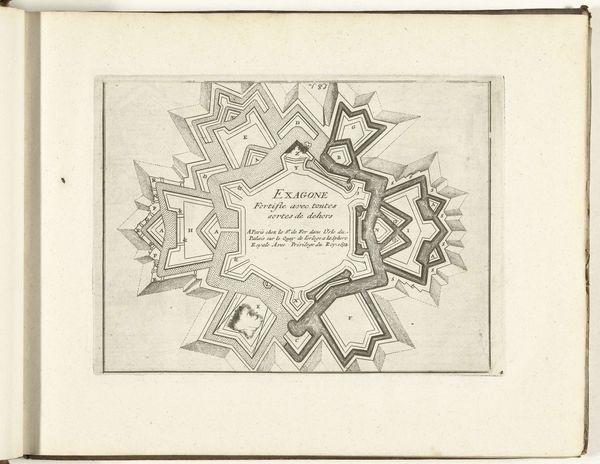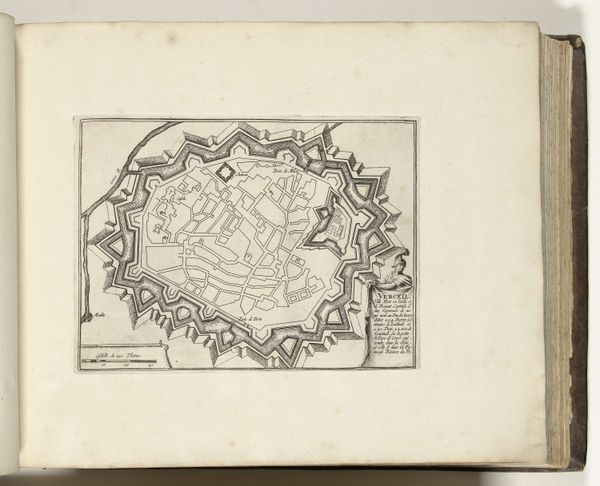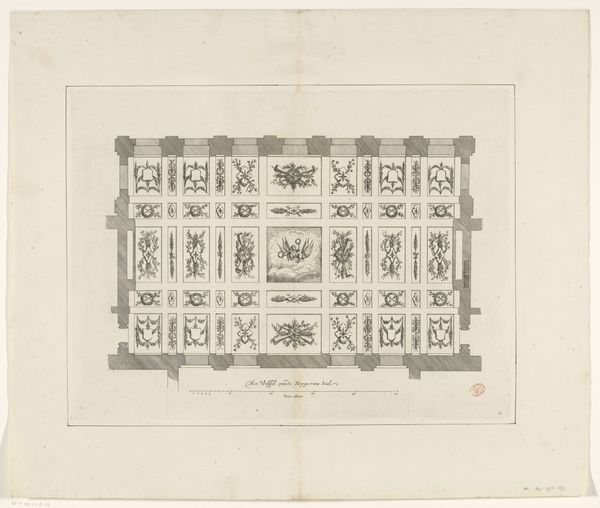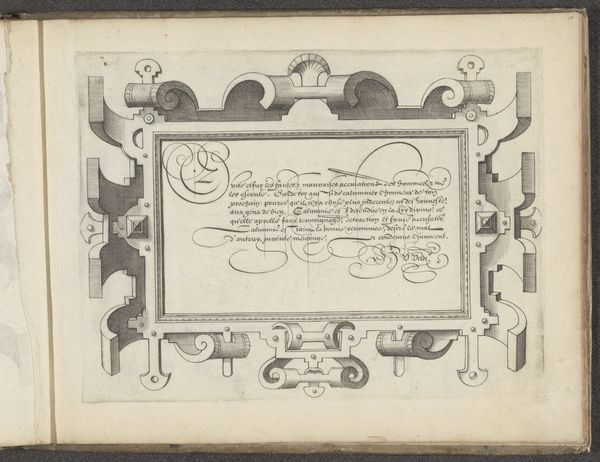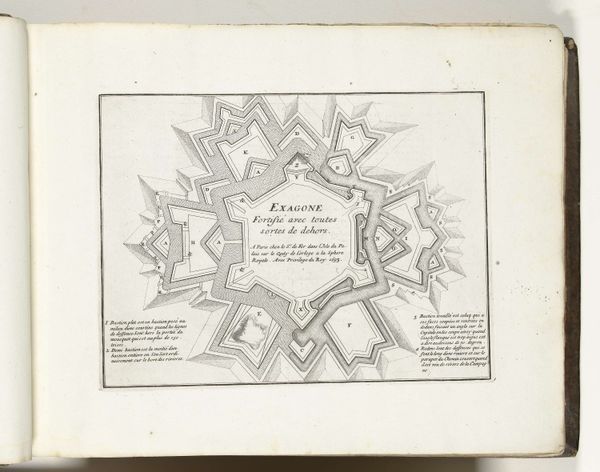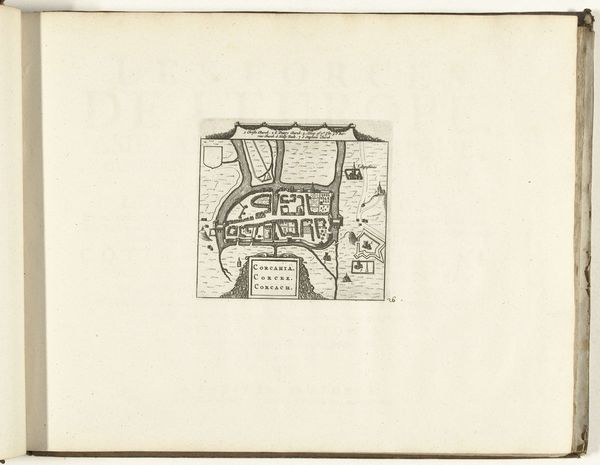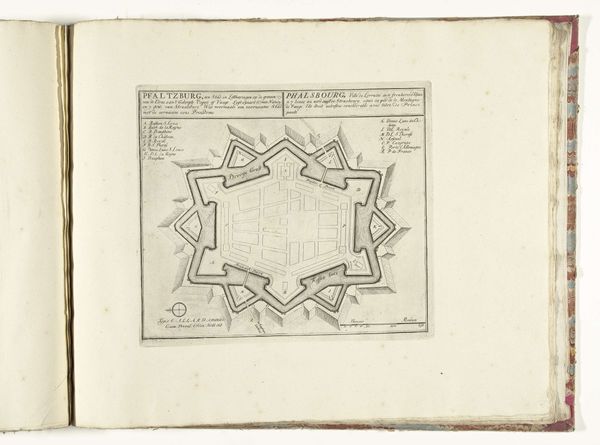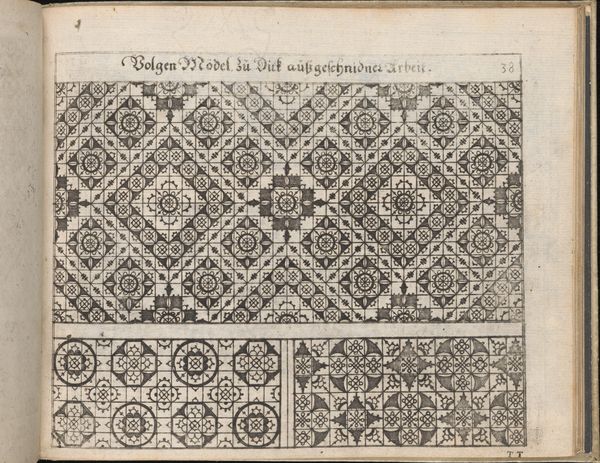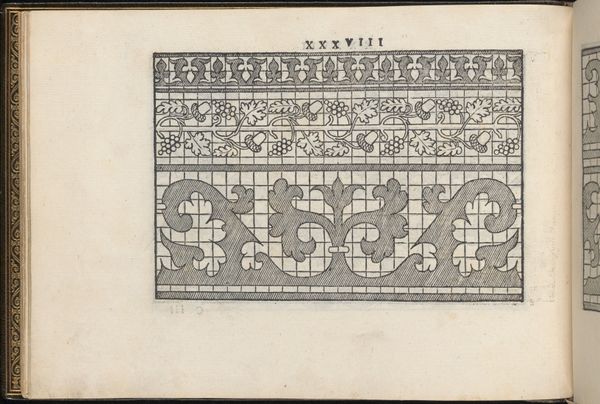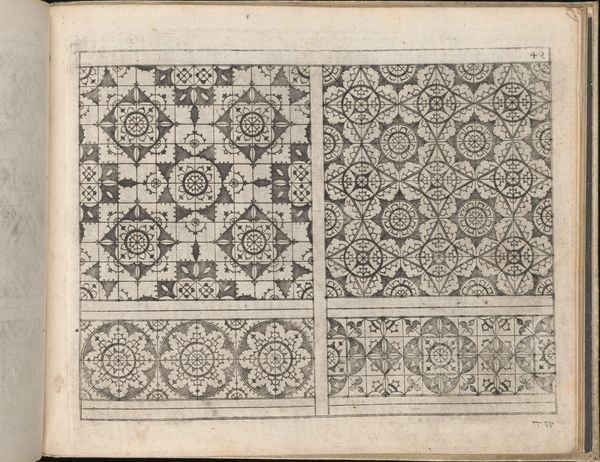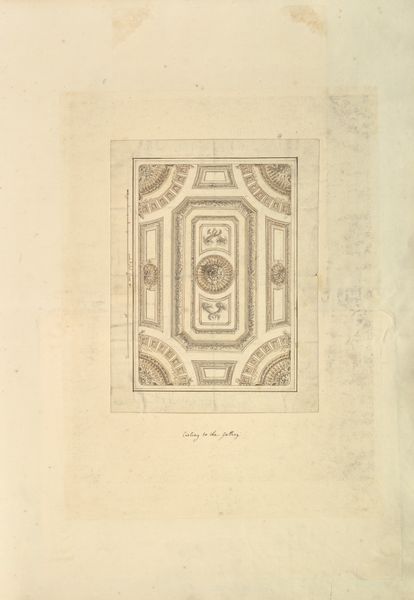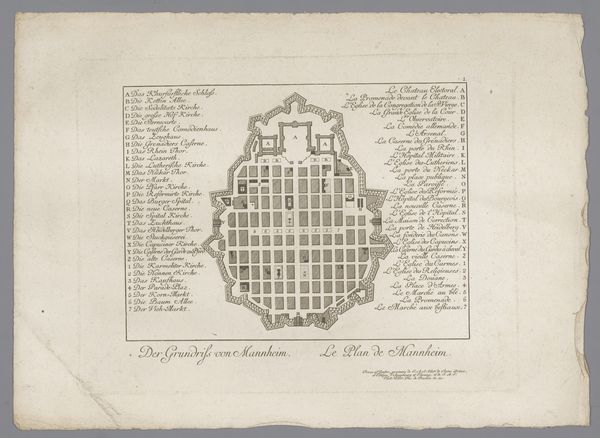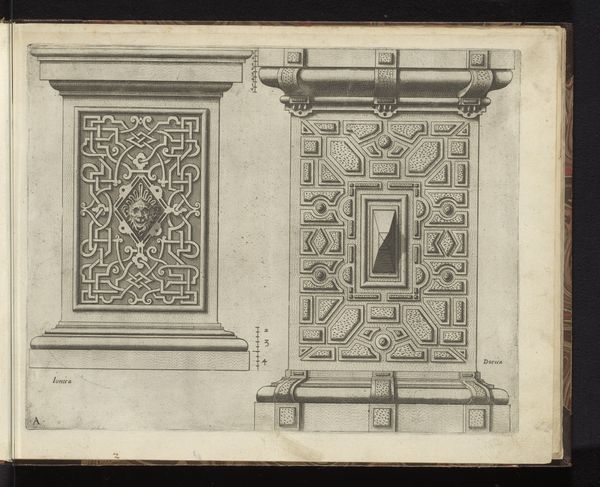
drawing, print, paper, ink, pen, engraving, architecture
#
drawing
#
aged paper
#
toned paper
#
baroque
# print
#
sketch book
#
hand drawn type
#
paper
#
personal sketchbook
#
ink
#
geometric
#
pen-ink sketch
#
pen and pencil
#
line
#
pen work
#
sketchbook drawing
#
pen
#
cityscape
#
sketchbook art
#
engraving
#
architecture
Dimensions: height 279 mm, width 265 mm
Copyright: Rijks Museum: Open Domain
Curator: Oh, look at this architectural marvel. It is the "Plattegrond van Villa Farnese te Caprarola," created after 1655 by Giovanni Battista Falda. It's a print, showcasing a floor plan of the Villa. What do you make of it? Editor: Intriguing! At first glance, it resembles a bizarre geometric starfish. There is something cold and forbidding, yet exquisitely planned about it. Curator: Exactly! Falda captures the villa’s pentagonal shape with incredible precision. Each point houses a bastion, demonstrating power and control beyond just living space. He really understood how architecture reflects social status. It's a bold statement, right? Editor: Absolutely. You can see that intent baked into its very structure. These rigid angles are softened internally, and what about that amazing central rotunda. Is it supposed to feel grand? Overpowering? Curator: It’s both! The rotunda was intended as the heart, both practically and symbolically connecting all the villa's wings. Falda meticulously depicts it, almost a celebration of the architectural design. Editor: Yes, there is artistry. But think about that imposing design. In effect, it is using beauty as another tool of asserting control, of presenting a singular, almost inescapable vision of order. It gives one pause to imagine what the intention would be from that era of political maneuverings, class division and displays of power. Curator: A good point! What about its setting amongst Italian gardens during the height of the Baroque period. Don’t you think there might be also playfulness to that visual dynamic? I mean, consider this detailed sketch on aged paper… Editor: I still read a touch of austere pride in the building, that it is asserting its authority with every precise line of ink. But thinking of those manicured gardens with playful fountains against such disciplined structure... there's the paradox of the era! A kind of cultivated chaos. Curator: An apt description. The beauty of architectural drawings lies not just in their aesthetic appeal, but their stories! Thanks for walking through it with me. Editor: Indeed. They teach us so much more about what the artists wanted to represent during these historic periods. Fascinating to ponder what intentions and choices helped form our current context!
Comments
No comments
Be the first to comment and join the conversation on the ultimate creative platform.
